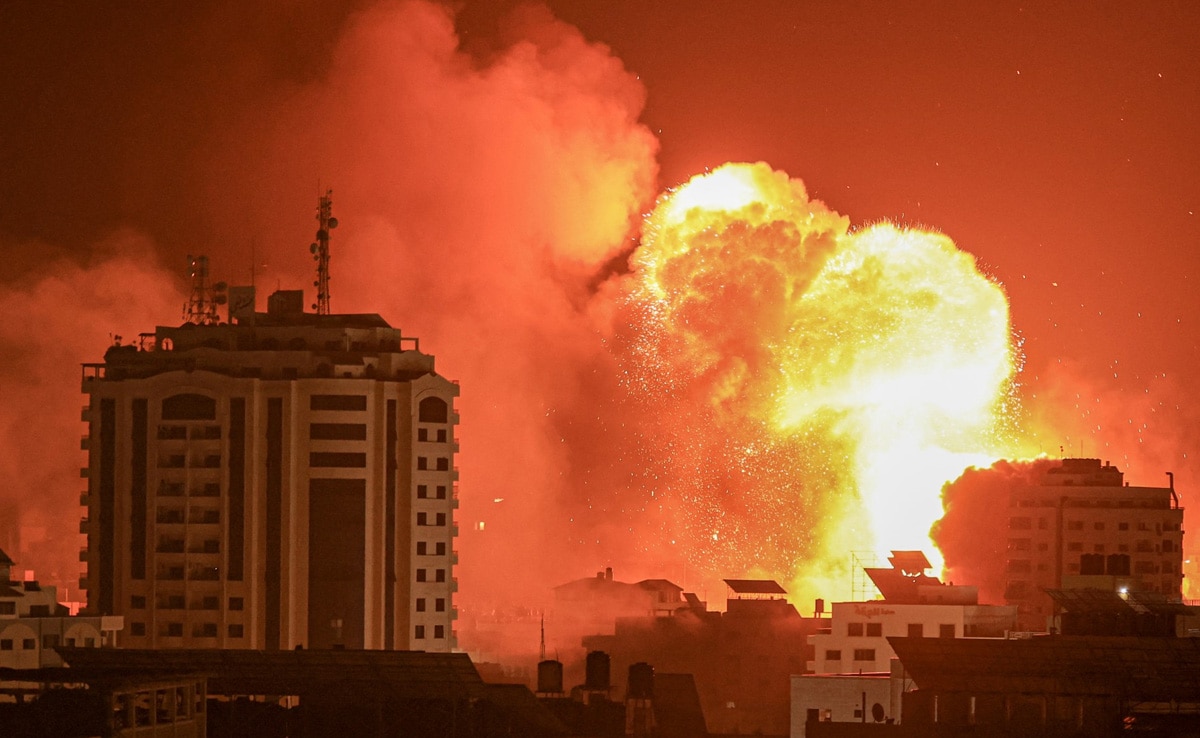
Israel has started a brutal counterstrike in Gaza Strip after the Hamas attacks
New Delhi:
The Gaza Strip, which has made headlines over the past few days following the shocking terror strike on Israel and the brutal retaliation that has followed, is a narrow strip of land on the Mediterranean coast. As Israel pounds Gaza to crush Hamas operatives, two million lives caught in the crossfire have no place to run or hide, and only a glimmer of hope to survive.
What Is Gaza?
Gaza, a narrow strip of land looking out to the Mediterranean Sea, has Israel on one side and Egypt on the other. The city, the largest in the State of Palestine, has an area of 365 sq km – about one-fourth the size of Delhi. As per 2022 estimates, about 2 million people live in Gaza, making it a densely populated area. There are two entry and exit points to Gaza – Erez Crossing with Israel in the north and Rafah Crossing with Egypt in the south. Israel controls Gaza’s airspace and its waters.

History And Politics
Once ruled by Egypt, Gaza was captured by Israeli forces after the Six-Day War in 1967 between Israel and Arab states. Over the next 38 years, Tel Aviv controlled Gaza. This period witnessed protests by Palestinians against Israeli occupation. Eventually, in 2005, Israel decided to formally end the military occupation of Gaza Strip. In the Palestinian parliamentary elections next year, Hamas scored a huge victory. Hamas and Fatah, which had finished second in the polls, formed a coalition government. But in 2007, Hamas took full control of Gaza, paving the way for the collapse of the government. Several neighbours declared the Fatah-led West Bank dispensation as the legitimate Palestinian government. The next year, a three-week war between Israel and Hamas claimed nearly 1,200 lives. Both sides blamed each other for making the first move. This started a cycle of violence that is still on.
An ‘Open Air Prison’
In its crackdown against Hamas, Israel imposed sweeping restrictions on the lives of Gaza residents, virtually blocking every opportunity and route to escape. While the world identifies West Bank and Gaza as one State, Tel Aviv’s tough policies block most Gaza residents from going to West Bank. Palestinians also face major difficulties in exiting Gaza through Egypt, with many reports flagging large-scale corruption in securing permission for passage. The ones who can pay, leave, the others don’t try. Israel had earlier destroyed Gaza’s airport and now controls its airspace. The Israeli Navy also controls Gaza’s coastline and has imposed a maritime blockade. The activities of Gazans are restricted to 11 km of the coastline. The curbs and surveillance have prompted rights monitor Human Rights Watch to call Gaza an “open-air prison”.
Life In Gaza
Israel’s sweeping restrictions, including tight limits on imports and exports, have crushed Gaza’s economy. According to a report by the United Nations Relief and Works Agency for Palestine Refugees in the Near East, overall unemployment in Gaza stood at 52 per cent in 2018. About 68 per cent of households in Gaza are food-insecure, the report said.

Homes in Gaza Strip suffer, on an average, 17 hours of power cuts daily. The report flags a downward trend in monthly crossings through Erez and Rafah borders. As Israel announces a complete siege of Gaza, effectively blocking electricity, food and water supply, one can only imagine how life would be for residents of the narrow strip, caught in the crossfire of warring powers.
Flee, But Where?
Hours after Hamas’ deadly rocket strikes, Israel Prime Minister Benjamin Netanyahu declared war. He posted on X, “I say to the residents of Gaza: Leave now because we will operate forcefully everywhere.” Former Prime Minister Yair Lapid told NDTV that there will be collateral damage as Israel hits back. “We are going to do our best to avoid the killing of bystanders, but there will collateral damage because this is war in a very dense area. People of Gaza should do their best to go as far as they can from Hamas facilities.” The question is where will Gazans go? and will Israel let them?

As Israeli fighter jets target Gaza structures, including residential buildings, more than 20,000 people have been displaced, the United Nations Relief and Works Agency for Palestine refugees has said, according to news agency AFP. Women, children and the elderly are hiding in schools. The UN’s World Food Programme has said it was “deeply concerned” about how the war would impact food supplies in Gaza. “While most shops in the affected areas in Palestine currently maintain one month of food stocks, these risk being depleted swiftly as people buy up food in fear of a prolonged conflict,” it said.




